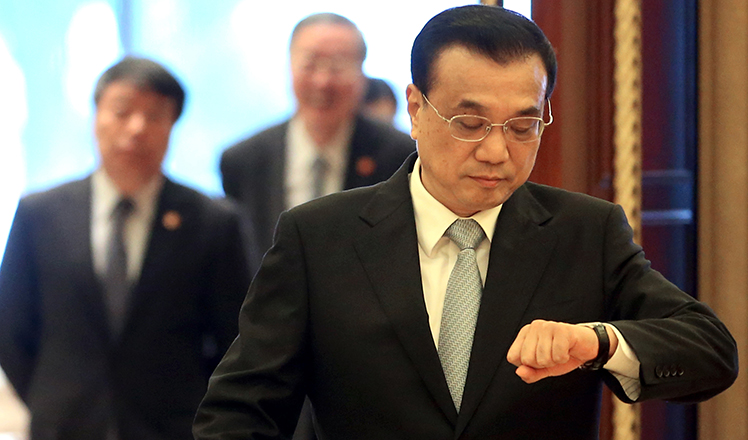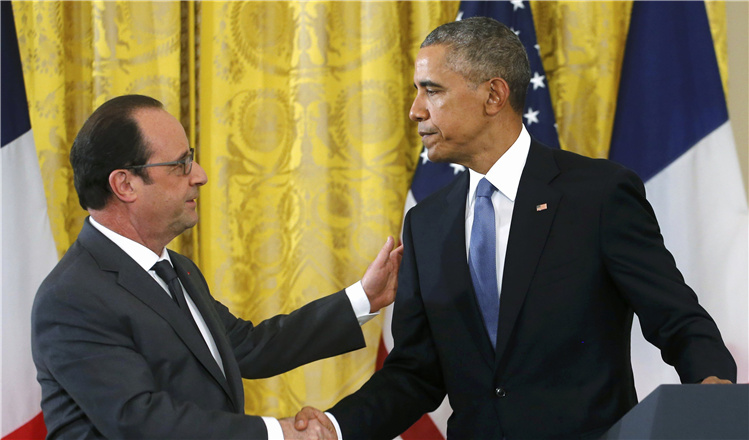All going to plan
Updated: 2015-11-25 23:29
By Andrew Moody(China Watch)
|
||||||||
 |
|
A 3-year-old plays with her baby sister in Fuzhou, Fujian province, in May. The toddler, who was 4 months old at the time, was born after China revised its family planning policy last year to allow couples to have a second child if one partner is an only child. Provided to China Daily |
China's leaders have pointed to the key tasks that will form the government's roadmap for development over the next five years, Andrew Moody reports.
A3-minute cartoon explaining the significance of China's next five-year plan in a fun way went viral in October.With its catchy tune and colorful animation, the short movie, released by Xinhua News Agency, was perhaps an uncharacteristically jaunty curtain raiser for what is traditionally serious business in China.
The 13th Five-Year Plan, a roadmap for the nation's development from 2016 to 2020, will be finalized in March, but a meeting of Communist Party leaders in Beijing in late October provided some pointers as to what the final version may look like.
Of course, most headlines after that meeting focused on the announcement that China will scrap its "one-child policy."
The family planning policy, which has been in place for over 35 years, is believed to have prevented up to 400 million births, but it has also resulted in an aging population. The proportion of working-age people (16 to 59) declined from a peak of 74.5 percent in 2010 to 66 percent last year.
However, relaxing the restrictions, which will see 90 million couples become eligible to have a second child, is unlikely to lead to a sudden surge in the birth rate, if previous policy changes are an indication. In late 2013, the government relaxed the policy to allow couples to have a second child in situations where one spouse was an only child. The change made 11 million more couples eligible, but as of this summer just 1.5 million had applied to take up the option.
While some population experts predict the change will boost the nation's labor supply in the long run, surveys suggest many couples have become conditioned to having just one child, while the costs of education and childcare are seen as barriers to having larger families.
"I think couples will be cautious," said Joy Huang, a research analyst at Euromonitor International. "In China, parents are also expected to eventually buy a property for their children, and with soaring property prices that could make having a second child very expensive."
In terms of the economy, it looks like China will set 2020 as the target for becoming a "high income" economy. The country will be hoping to avoid the so-called middle-income trap, which has blighted so many economies, especially in Latin America, and raise the average per capita income to $12,000 a year, double the 2010 level.
President Xi Jinping has said annual growth of 6.5 percent would "be the minimum required" to achieve these goals. The target for this year is about 7 percent, with data showing that the economy grew 6.9 percent in the third quarter.
Yet economist Ruchir Sharma, the author of "Breakout Nations: In Pursuit of the Next Economic Miracles," has warned that China could be in danger of making too big a dash for growth and stoking up debt in the process. The country’s debt to GDP ratio, by some estimates, is now 250 percent.
"I don't think it really matters whether China becomes a high-income country by 2020 or, say, 2025 or 2028," he said. "The biggest source of imbalance in the Chinese economy is that debt is growing twice as fast as the economy as a whole. If you look at every single economic miracle in history, from South Korea to Japan, they all ended on a similar note with a debt explosion at the end of a cycle."
Sharma, who is head of emerging markets at J.P. Morgan in New York, said he believes China may also have to deal with external headwinds, including another global recession.
"Our research shows that over the past 50 years, global recessions — where global growth falls below 2 percent — have occurred every eight years. There is more than a 50 percent chance of such a recession over the next five years," he added.
One key task for China over the next five years will be the reform of state-owned enterprises (SOEs).
The country has 110 central SOEs and another 150,000 under local government control. They include companies in strategic sectors such as oil and gas, but also in commercial sectors that some people believe would be better served by the private sector.
Together, SOEs have assets worth $15.7 trillion and last year generated profits of $2.48 trillion. Yet critics say they are inefficient, take up too much labor and capital resources, and hamper future economic development.
In September, the State Council issued guidelines that called for a new generation of more entrepreneurial managers to be in place by 2020. The guidelines are likely to be the basis of measures in the new five-year plan.
Thomas Luedi, a managing partner at A.T. Kearney, said he believes SOE reform is central to China's overall economic reform.
"Twenty years ago when labor costs were very low, nobody really cared about the productivity of these enterprises. When growth was going like crazy what mattered was that they produced every last tonnage of what they were producing," he said. "Now we are in a different environment with labor costs rising. They now might be more than half as efficient as their equivalent Western businesses."
He said the government is right to prioritize bringing in higher-quality management to these enterprises, but he said the new generation needed to be given the freedom to rationalize the businesses and drive efficiency.
According to the central government, the new plan will also include a major extension of health care insurance, financial reforms and liberalization of the capital account, and targets for constructing affordable housing and reducing pollution.
Yet as China is now the world's second-largest economy, the success of the 13th Five-Year Plan is not only important domestically, but also globally. When it is published in March, people around the world will be going through the document line by line to find the various nuances of policy development.
"Broadly speaking, it looks like it will be a good plan and will move China in the right direction in terms of reform," said Julian Evans-Pritchard with Capital Economics in Singapore. "The government is intent on making progress in a lot of areas."
Lan Lan and Shan Juan contributed to this story.

 Premier Li's fast-paced diplomacy
Premier Li's fast-paced diplomacy
 Obama: US, France stand united against IS, terrorism
Obama: US, France stand united against IS, terrorism
 Charming art made from everyday objects
Charming art made from everyday objects
 Ukraine sculptors set up workshop in China
Ukraine sculptors set up workshop in China
 Billionaire pays for $170m Modigliani with credit card
Billionaire pays for $170m Modigliani with credit card
 Crime stoppers meet in DC
Crime stoppers meet in DC
 Premier: China ready to advance Baltic Sea high-speed rail project
Premier: China ready to advance Baltic Sea high-speed rail project
 Beijing greets the sun after 19 days of gloom
Beijing greets the sun after 19 days of gloom
Most Viewed
Editor's Picks

|

|

|

|

|

|
Today's Top News
Chinese president arrives in Turkey for G20 summit
Islamic State claims responsibility for Paris attacks
Obama, Netanyahu at White House seek to mend US-Israel ties
China, not Canada, is top US trade partner
Tu first Chinese to win Nobel Prize in Medicine
Huntsman says Sino-US relationship needs common goals
Xi pledges $2 billion to help developing countries
Young people from US look forward to Xi's state visit: Survey
US Weekly

|

|








